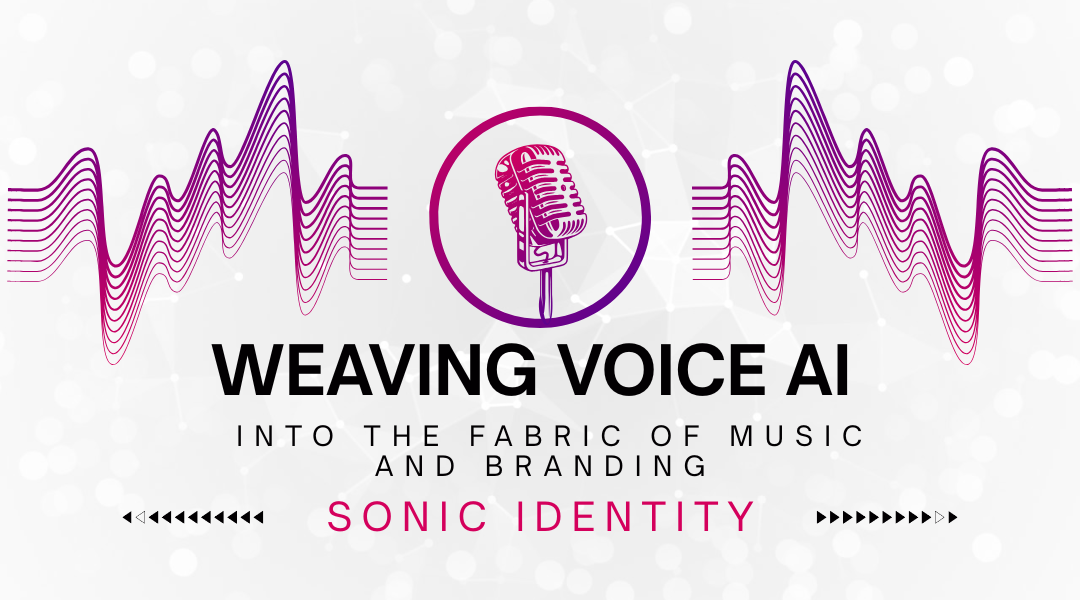In the crowded digital soundscape, a unique auditory identity isn’t just a luxury—it’s a necessity. While voice cloning has made waves in podcasts and audiobooks, its most creative applications are now resonating in the worlds of music and brand building. This technology is moving beyond simple replication, becoming a dynamic instrument for composers and a foundational tool for crafting a memorable sonic brand. It’s allowing creators to build entire auditory worlds from a single source, transforming a voice into a versatile and powerful asset.
1. The Producer’s Secret Weapon: Crafting Vocal Hooks from Scratch
Every hit song has that unforgettable element—a vocal hook that embeds itself in the listener’s mind. For musicians and producers, capturing that perfect take can be an expensive and time-consuming process of studio sessions and vocal coaching. Voice cloning is revolutionizing this by turning the producer’s own voice into a raw, malleable instrument for songwriting and production.
The Creative Process:
Imagine sketching a vocal idea as easily as humming a melody. With a cloned voice, a producer can:
- Generate Demo Vocals: Quickly lay down guide vocals for a track to establish melody and timing, without needing a dedicated singer in the studio.
- Experiment with Textures: Create a phrase in their own voice and then digitally manipulate it—adding distortion, pitching it down for a demonic effect, or applying a robotic vocoder filter.
- Layer and Harmonize: Build rich, complex vocal textures by generating multiple takes in an identical tone, ensuring perfect harmony stacks that would be challenging for a human to replicate precisely.
A Real-World Scenario:
An indie synthwave artist named Sofia was producing a track about artificial intelligence. She cloned her voice and generated the line, “System override.” She then processed the cloned vocal through a bit-crusher and a heavy delay, creating a glitchy, echoing hook that became the track’s central motif. This not only saved her the cost and coordination of hiring a session singer but also gave her the absolute creative control to perfectly align the vocal’s aesthetic with the song’s theme.
2. The Audible Handshake: Building Brand Recognition with a Cloned Voice
In a world of fleeting visual attention, sound offers a direct pathway to memory and emotion. The most successful brands have long understood this, with sonic logos like McDonald’s “I’m Lovin’ It” or the MGM lion’s roar. Voice cloning now democratizes this power, enabling even solo creators and small businesses to develop a consistent and professional audio identity.
Crafting a Sonic Signature:
This goes beyond a simple greeting. It’s about creating a suite of branded audio assets that foster instant recognition.
- Platform-Specific Intros: A short, punchy ident for YouTube videos, a slightly longer, more welcoming version for podcast episodes, and a professional message for a company’s hold system.
- Adaptable and Scalable: The same core voice clone can be used to generate seasonal messages (“Happy Holidays from the entire team”), promote limited-time offers, or even localize greetings for different international markets without re-recording.
- Emotional Consistency: The voice always carries the same trusted tone—whether it’s energetic, calming, or authoritative—strengthening the brand’s relationship with its audience.
A Real-World Scenario:
A financial literacy platform called “Verde Growth” wanted to sound both trustworthy and approachable. They cloned the voice of their founder, a former accountant with a calm, reassuring delivery. They created a three-note musical sting that plays as the founder’s cloned voice says, “Grow with confidence.” This audio logo is used at the start of all their webinars, within their mobile app, and on their social media videos. The consistent sonic cue has made their brand instantly recognizable, building trust through auditory repetition.
3. The One-Person Theater: Building a Cast of Vocal Characters
For storytellers, animators, and game developers, character voices are the soul of the narrative. Traditionally, this meant budgeting for multiple voice actors and coordinating complex recording schedules. Voice cloning shatters this constraint, enabling a single individual to generate an entire cast of distinct, consistent characters.
The Art of Vocal Alchemy:
This involves using AI as a character design tool, not just a playback device. A creator can:
- Establish a Vocal Base: Start with their natural voice as a template.
- Engineer Personalities: Create specific profiles by adjusting parameters like pitch (a higher register for a youthful character), timbre (a raspier tone for a weary veteran), and pacing (a slower, deliberate speech for a wise elder).
- Maintain Unwavering Consistency: Ensure that a character’s voice sounds exactly the same in episode one as it does in episode fifty, regardless of the creator’s health or schedule.
A Real-World Scenario:
Marcus, the creator of a horror anthology podcast, uses his voice clone to generate all the narrators and victims in his stories. For one episode, he created three unique profiles from his voice: a trembling, breathy profile for a terrified teenager; a calm, deep, and unsettling profile for the omnipotent narrator; and a panicked, higher-pitched profile for a doomed police officer. By weaving these cloned voices together in post-production, he produces a deeply immersive experience that feels like a full-cast performance, all while maintaining complete creative and narrative control.
Conclusion: The Voice as a Foundational Creative Tool
The integration of voice cloning into music and branding marks a significant shift. The human voice is no longer just a vehicle for words or song; it has become a primary asset in the creator’s toolkit—as fundamental as a camera to a filmmaker or a code editor to a developer. It allows for unprecedented levels of experimentation in music production, enables the building of sophisticated and scalable sonic brands, and unlocks new forms of solo-led narrative storytelling.
This technology is not about creating a world of synthetic sound, but about empowering human creativity to reach further than ever before. It hands the keys to sonic innovation to the individual, allowing them to compose, brand, and perform with a unique and personal voice that is limited only by their imagination.
